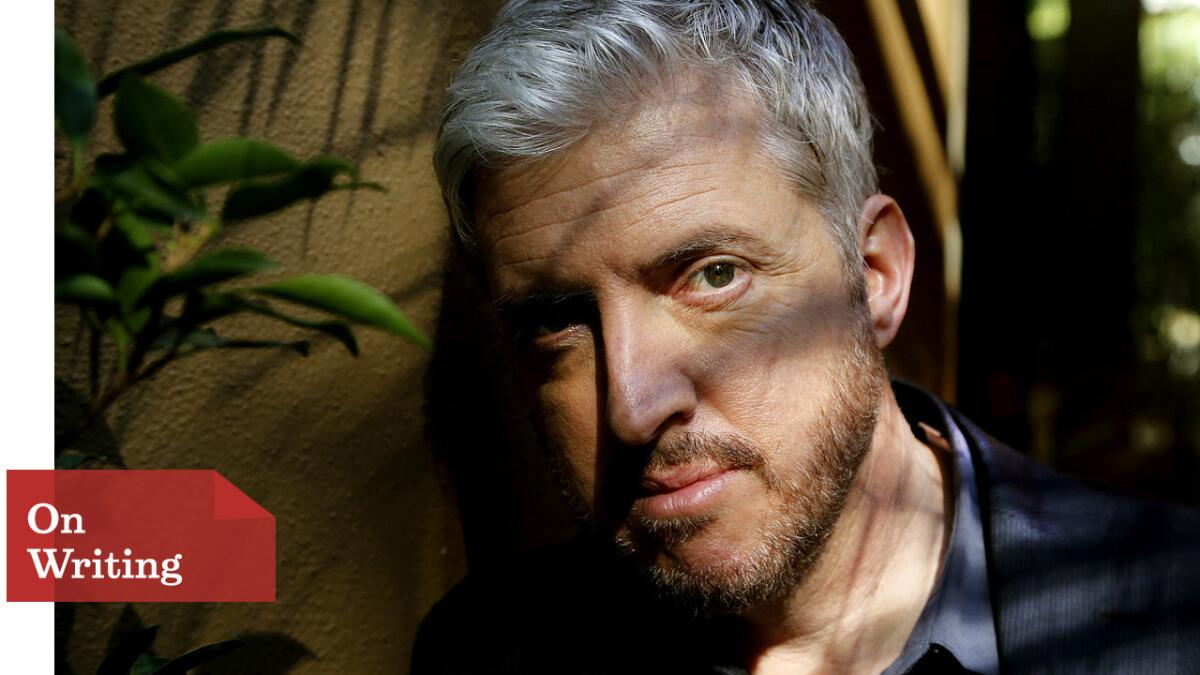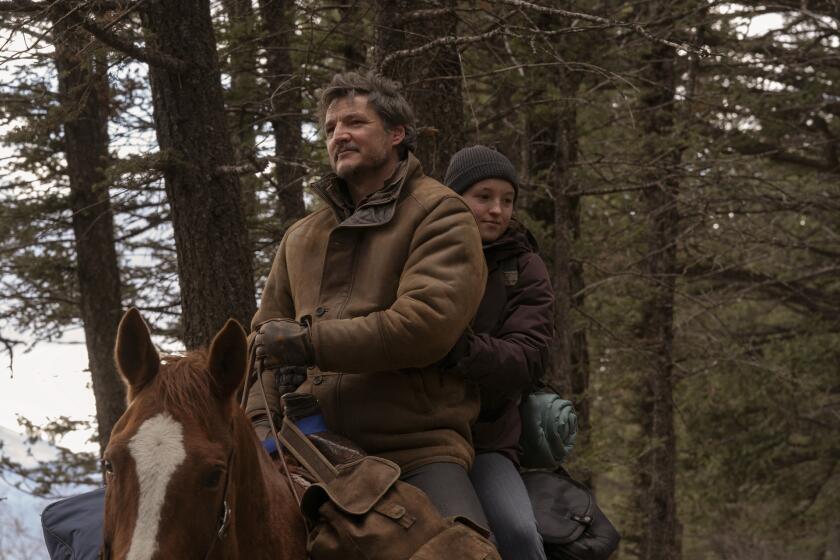The Envelope: A brief history of the making of ‘Everything’

- Share via
In 1988, along with 10 million others, I spent several days trying to decipher, decode and demystify “A Brief History of Time” by professor Stephen Hawking, the world-renowned physicist.
Failed.
Reading is not the same thing as understanding, and the professor did a fine job of making all 10 million of us feel simultaneously stupid and grateful, blissfully bamboozled, in awe and inept, shunted to the threshold of the incomprehensible to ponder the very, very big from a vantage of feeling very, very small.
What an icon Hawking is — a dramatis persona from writer’s heaven. His theories about time and space had deservedly made him famous, but it is his decade-on-decade outliving of a diagnosis of motor neuron disease (a type of ALS) and his ability to maintain his curiosity and sense of humor that turned him into a hero. In one man, here is an unprecedented juxtaposition of extraordinary mental prowess and extraordinary physical incapacity.
Back in 1988, when he told us that the universe was far more mysterious than we ever suspected, the world realized it had found a symbol for scientific genius that rivaled Albert Einstein.
Someone will make a wonderful movie about this man one day, I mused, never imagining that I would ever have any role to play in this.
In 2004, I reentered the Hawking universe from a different angle when I read the autobiography of Stephen’s first wife, Jane Hawking, “Traveling to Infinity.” As I turned her pages, the publicly known facts of the icon in the wheelchair faded to reveal a one-of-a-kind love story, the tale of a courageous young woman who fell in love with a young scientist at Cambridge University only to learn that he had been given only two years to live. Sure she had the strength to support Stephen during his ordeal, she agreed to marry him, but what transpired was an extraordinary 26-year union in which they explored the love of physics and the physics of love.
I was about a third of the way through Jane’s book when I felt an internal ratchet-click and resolved that I must catch the train to Cambridge, hometown to both Hawkings, and simply knock on Jane’s door and beg her to let me option the film rights to her book. To my eternal gratitude she let a stranger cross her threshold. She was encouraged enough by what I said that day to allow me to write a script, “then we shall talk again.” It was clear to both of us that she had stopped far short of granting me the rights I needed.
The years passed. With script in hand I knocked on a great many doors, but none opened. I was told there was little market for this kind of story. Why could no one perceive the remarkable, even unprecedented artistic opportunities here?
In 2009, I joined forces with producer Lisa Bruce, and, when Jane eventually signed over her book rights in 2012, we snared James Marsh (“Man on Wire”) to direct. Suddenly we were moving and moving fast. Eric Fellner, co-head of Britain’s Working Title, responded positively within 11 hours of being sent the script. Eddie Redmayne quickly agreed to play Stephen and Felicity Jones to play Jane. Filming began in Cambridge in October 2013.
One particular night of filming stands out in memory. We were staging Stephen and Jane’s first date — a re-creation of the 1963 May Ball for Cambridge undergraduates. We had 300 extras in black tie and gowns, two bands, a carnival and a few thousand quid worth of fireworks ready to erupt in the cold autumn night.
And then the professor arrived. A staffer was dispatched to halt the professor beyond the edge of frame. This was narrowly accomplished. “Action!” James called. The music struck up, 150 couples began to waltz, gloved waiters served Champagne from silver trays, the bands played soft jazz until the sky suddenly filled with supernovae.
I was told later the professor smiled. Perhaps, in that moment, he was young again, a nervous youth on his first date with the woman with whom he’d share half a life. Had I been at his ear I might have whispered:
“Professor? That’s Hollywood.”
More to Read
From the Oscars to the Emmys.
Get the Envelope newsletter for exclusive awards season coverage, behind-the-scenes stories from the Envelope podcast and columnist Glenn Whipp’s must-read analysis.
You may occasionally receive promotional content from the Los Angeles Times.










